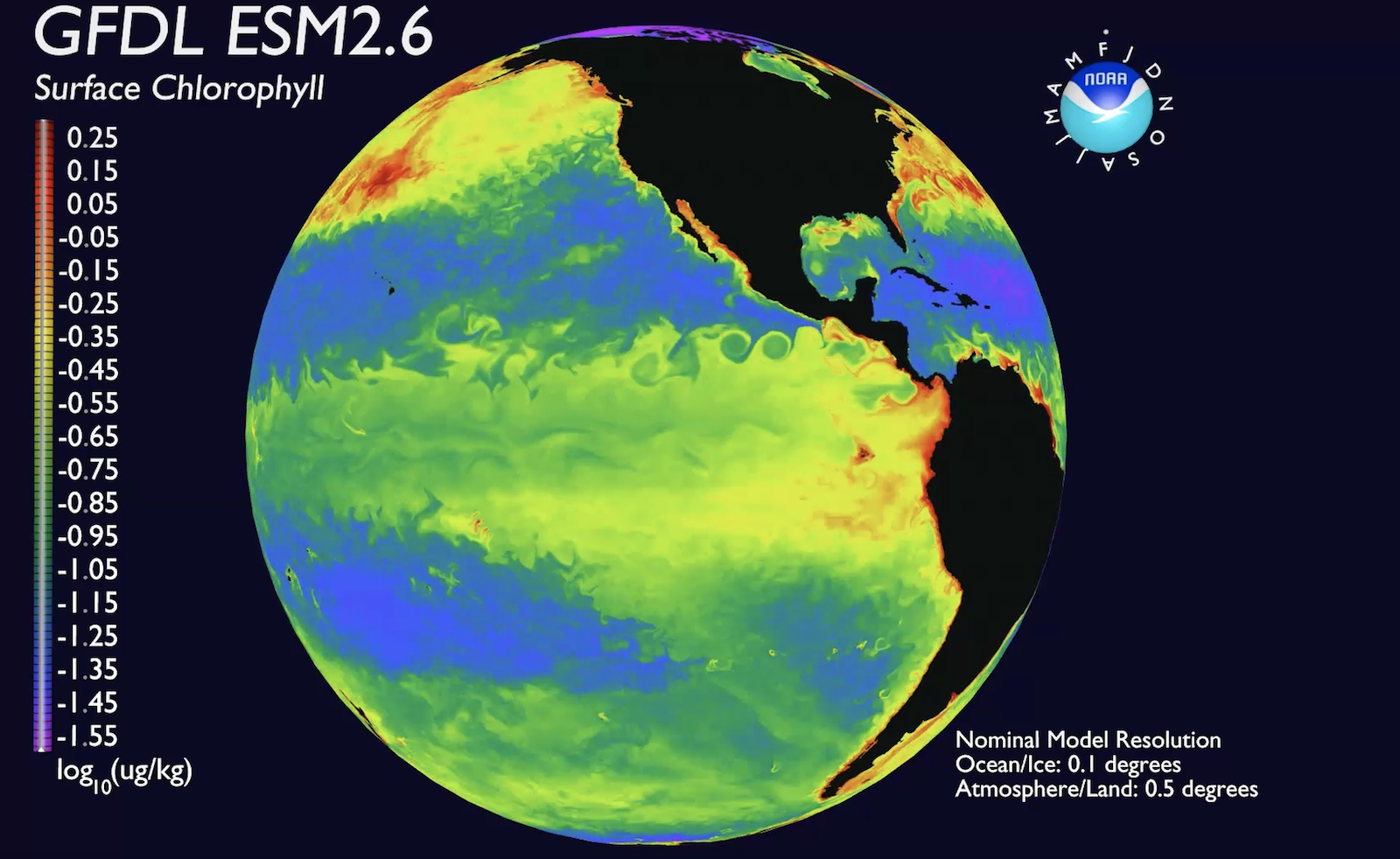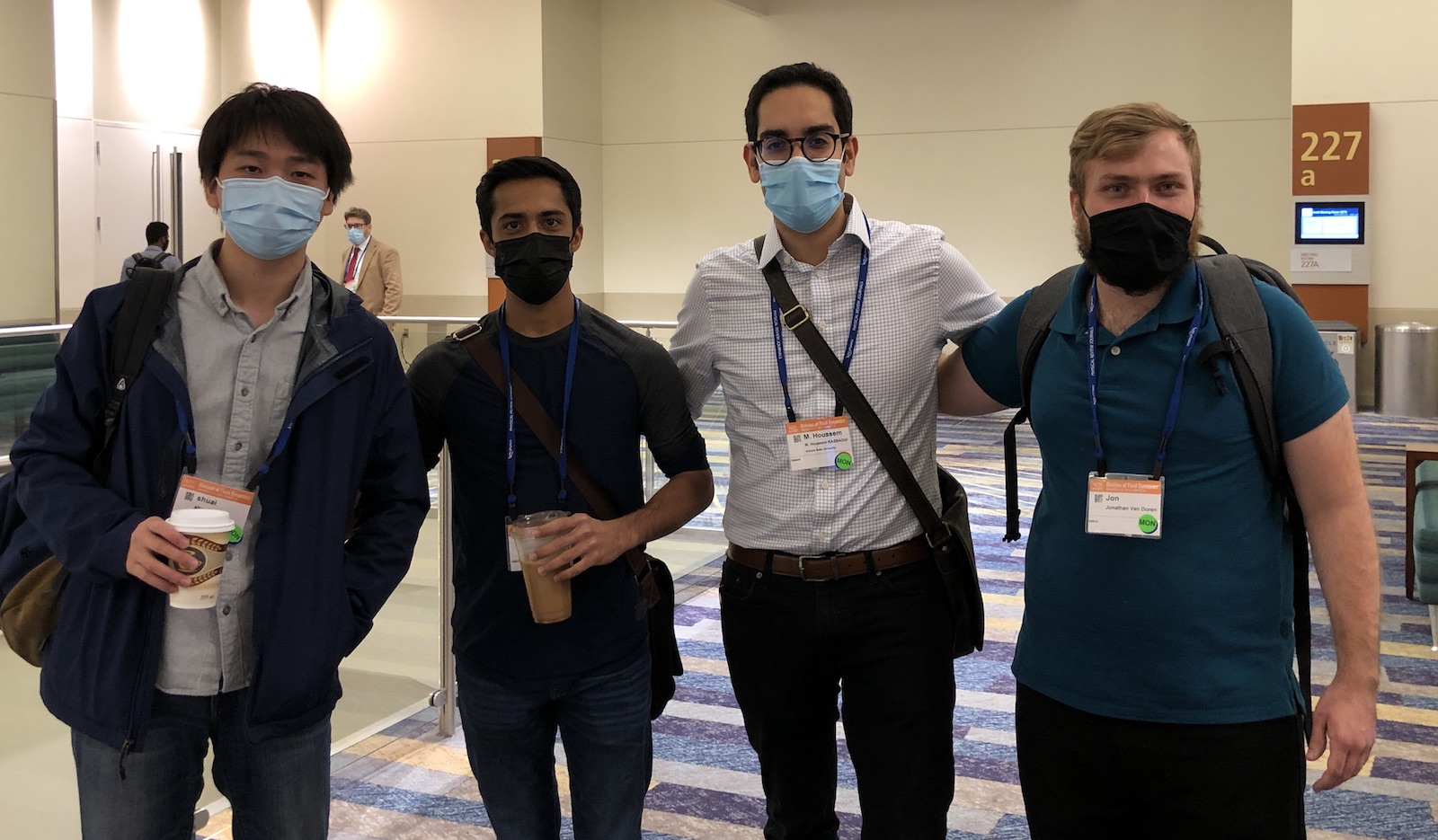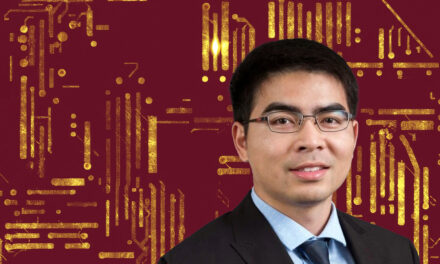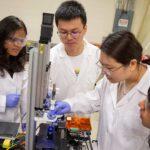
Going with the flow
Deeper probes into forces shaping nature’s movement of liquids and gases promise progress in solving big technological challenges

Above: Several faculty members and students in Arizona State University’s Ira A. Fulton Schools of Engineering led sessions or gave presentations at the recent annual meeting the American Physical Society’s Division of Fluid Dynamics. The Fulton Schools faculty has more than a dozen members leading research in a range of pursuits in fluid dynamics to find solutions to science and engineering challenges in transportation, environmental management, medical care, energy, aerospace fields and other critical areas. Photo courtesy of Shutterstock
Over the almost four decades he has been working in fluid dynamics, Werner Dahm has yet to see a lull in its upward trajectory as a springboard for progress in science, engineering, technology and the growth of industry.
The vigor of the field as a driver of innovation in developing potential solutions to some of the world’s most critical challenges was recently on display at the 74th Annual Meeting of the American Physical Society’s Division of Fluid Dynamics, or APS DFD, in Phoenix.
“This was one of the best APS DFD meetings I’ve attended in the past 40 years,” says Dahm, the Arizona State University Foundation Professor of Aerospace and Mechanical Engineering, leader of the Laboratory for Turbulence, Combustion, and Propulsion, and founding director and chief scientist for ASU’s Security and Defense Systems Initiative.
The November 21–23 event drew more than 2,400 participants (in person and virtually) from around the world to show a plethora of pursuits in fluid dynamics that Dahm says “span across a wide range of technological applications that are going to provide enormous benefits to society.”
Some of the researchers striving for those achievements are Dahm’s colleagues in the Ira A. Fulton Schools of Engineering at ASU, notably this year’s APS DFD conference chair, Professor Marcus Herrmann, and co-chair, Associate Professor Konrad Rykaczewski, along with many of their fellow faculty members in the School for Engineering of Matter, Transport and Energy, one of the seven Fulton Schools.
Taming turbulence opens path to new possibilities
As a branch of applied science focusing on the flow of liquids and gases and their interactions within various environments, fluid dynamics research can encompass explorations across a full spectrum science and engineering endeavors.
Rykaczewski’s and Herrmann’s work includes multiple aspects of mechanical engineering, chemical engineering, and materials science and engineering, with applications in almost all technologies and systems in which air, liquids and gases are involved.
One of Herrmann’s concentrations is on turbulence, a major factor in the performance and resilience of every major mode of transport of people and materials, especially aviation.
Rykaczewski’s far-ranging research includes imaginative approaches to developing soft thermal materials and systems that insulate people and things against the effects of extreme heat.
The study of turbulence is also at the center of Associate Professor Yulia Peet‘s research, with particular applications in wind energy, aerospace and the mechanics of biological fluids, as well as in high-performance computing, an expanding field that is increasing the scope of nearly all areas of fluid dynamics research.
“Some of the new advances in fluids knowledge will help us design more effective medical devices, and help solve environmental problems like air pollution,” Peet says.

This image of Earth’s surface chlorophyll, from the high-resolution Earth Systems Model of the Geophysical Fluid Dynamics Laboratory at the National Oceanic and Atmospheric Administration, demonstrates that fluid dynamics is one of the biggest factors shaping physical environments throughout the world. Image courtesy of the U.S. National Oceanic and Atmospheric Administration.
Controlling flows brings benefits for impactful pursuits
Multiphase and aerosol-laden flows for environmental and aerospace applications is one of Assistant Professor Mohamed Houssem Kasbaoui‘s area of expertise.
Airborne aerosols are very small solid or liquid particles that can suspend in the air. Some of them are a significant cause for concern in public health because they can spread germs and viruses. So, Kasbaoui’s latest research efforts lately have turned to studies related to the COVID-19 virus and the spread of the pandemic it has caused.
He is among those bringing more depth to the understanding of fluid dynamics by using the some of the latest and most advanced technologies to aid research, particularly high-fidelity computational models and massively parallel simulations on the largest supercomputers.
These impressively robust data-generating tools promise to provide deeper knowledge about the movement and characteristics of fluids and gases. They could, for instance, help industries more efficiently control the flows of gases and liquids through extensive pipelines, boost the effectiveness of pharmaceutical medications, enable extraction of energy from ocean waves and increase our understanding of blood flow to improve medical care, Kasbaoui says.
“With growing computing power, high-fidelity computational fluid dynamics is going to have a transformative impact on fields in which experimentation and trial-and-error approaches have been standard, such as geophysical and biological flows,” he says.
Environmental and air travel advances on the horizon
Some of Assistant Professor Jeonglae Kim‘s work involves the simulation of high-speed turbulent flows involving multi-physics, flow control and optimization. Some of that work involves more deeply probing the multiscale interactions of turbulence.
One aim of Kim’s work in this area is to get a clearer understanding of the flows of various kinds of particles in different environments. Kim says more in-depth knowledge could reveal useful information about the movement of air pollution, and the increasing environmental contamination from microplastics in air, water and soil.
Kim’s primary focus is on aeroacoustics, mainly the intense generation of sound by turbulent flows that cause the most common physical and sensory effect associated with the propagation of sound from jet engines and their surrounding environments.
There is a growing interest from governments and industry to enable more supersonic and hypersonic flight. Supersonic flight involves traveling through the air at speeds greater than the speed of sound. Hypersonic flight is flight in the atmosphere below approximately 150 miles at speeds ranging between Mach 5-10 (five times the speed of sound, which varies at different altitudes). At that speed, the chemical and molecular dissociation of air becomes significant and creates high heat loads that cause thermal stress.
Using hypersonic systems allows for more speed and maneuverability in situations when they are most needed. The development of hypersonics is advancing across the globe, and the U.S. Department of Defense has made hypersonic flight a key mission priority. Supersonic flight would allow more people to travel faster over long distances.
The problem is the disturbingly powerful sonic booms produced by these types of flight. Kim hopes to design computer simulations of methods that remedy the disruptive acoustic drawbacks.
Advanced computer modeling and simulation now being used in fluid dynamics raise the possibility of solving the problem, he says.

Pictured (left to right) at the recent international gathering in Phoenix of engineers and scientists doing work in fluid dynamics are Fulton Schools mechanical engineering doctoral students Shuai Shuai and Himanshu Dave, Assistant Professor Mohamed Houssem Kasbaoui and aerospace engineering doctoral student Johnathan Van Doren. Shaui, Dave and Van Doren were among students selected to give presentations at the event on the progress of their fluid dynamics research. Photo courtesy of Mohamed Houssem Kasbaoui
Dodging the threats of pollution and climate change
Using laboratory experiments, Assistant Professor Gokul Pathikonda is also trying to answer big questions to provide a clearer picture of the fundamental nature of turbulent fluid flow and its impacts — a forward leap he says would lay the groundwork for a more encompassing “geophysical fluid dynamics” and to move us closer to an array of solutions for global challenges.
Understanding turbulence would overcome many obstacles in the aerodynamics of aviation and other forms of transport, such as ships, and also provide better ways to predict the flow of pollutants in the air and in water, Pathikonda says. For example, advances in the field could enable prediction of potential environmental threats posed by climate change and help develop effective mitigation strategies, he says.
Other experts suggest fluid dynamics research might also reveal how progress in the field could contribute to developing and generating cleaner energy and possibly enable more ambitious space exploration.
Fluid dynamics problem solving is also resulting from the probing inquiries of other Fulton Schools faculty members, including Regents Professor Ronald Adrian, a member of the National Academy of Engineering, and Associate Professors Heather Emady, Huei-Ping Huang, Kangping Chen, Taewoo Lee and Ronald Calhoun.
Continuing support from U.S. government and industry sources — the U.S. Department of Energy, Department of Defense, the Environmental Protection Agency and the National Science Foundation among them, along with corporate funding from major companies — provides validation that these and other ASU researchers are collectively viewed as a potentially potent force in breaking new ground in fluid dynamics.
Preparing tomorrow’s fluid dynamics innovators
Werner Dahm sees positive signs that the impact of the Fulton Schools’ progress in fluid dynamics will continue through the students he and his colleagues are educating.
Dahm, a former chief scientist of the U.S. Air Force, points to students who have helped him move forward in his work on computational simulations of turbulent flows and their applications in aircraft and rocket propulsion systems.
Students, for instance, haven taken it upon themselves to devise “entirely new approaches” to solving problems and improving processes to advance research, Dahm says, making him confident that he will be seeing some of them among the fluid dynamics leaders of the future.



































